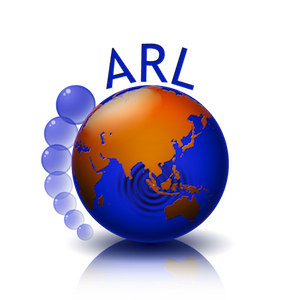It has long been known that bubbles severely affect underwater acoustic propagation. Communication systems operating in the surf zone or in areas with strong winds are strongly impacted by attenuation due to dense bubble clouds. In areas with only occasional bubble injection (e.g. ship wakes), without continuous replenishment, however dense bubble clouds dissipate rapidly in a few minutes, along with the strong attenuation. Our recent work showed that when the dense bubble clouds dissipate, they leave behind a diffuse bubble cloud with very small bubbles. These diffused bubbles can be stabilized by surfactants in the water, resulting in lifetimes that are much longer than had been previously known (often half an hour or more). Although the attenuation due to these residual bubbles is small, this results in an increase in channel variability due to their random motion, and severely impact coherent acoustic communication. Because they can be transported by currents to distant locations, these bubbles have a persistent impact on underwater communication systems in many environments, including those where winds are not very strong, but where exists other sources of bubbles (e.g., in the vicinity of shipping channels).


